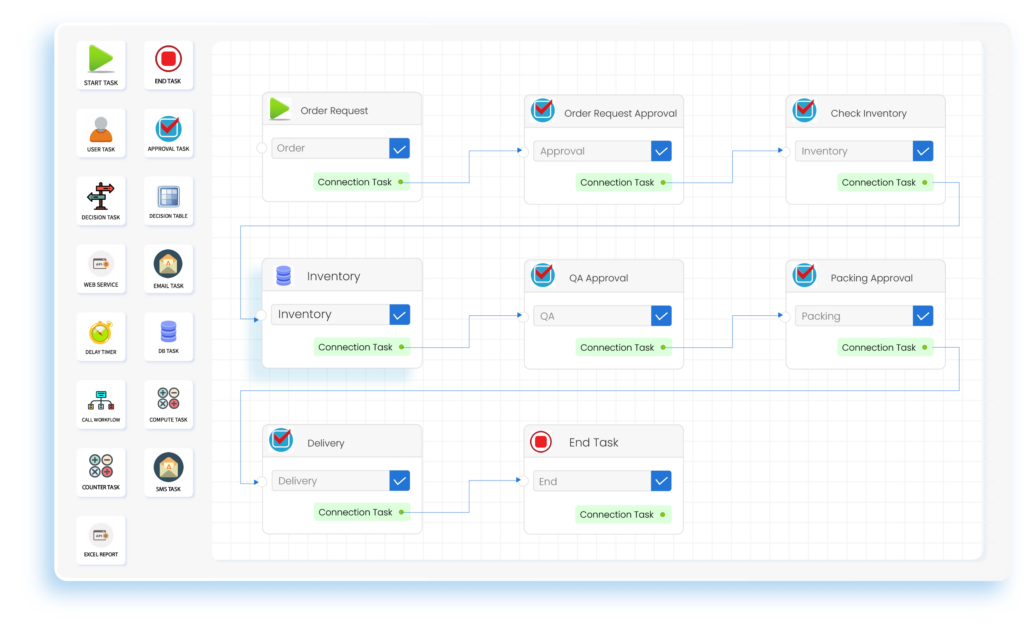Table of Contents
Managing inventories in the fast-paced business world is not an easy task. Efficient inventory management is the backbone of the business processes that enhance customer satisfaction and boost sales.
Inventory management is a day-to-day activity that everyone follows. Even grocery shopping is also a kind of inventory management which deals with inventory lists. When it comes to businesses, the process is more tedious. It requires some proper systematic approach to maintain inventories in an efficient manner.
This article elaborates on inventory management, the importance of inventory management, inventory lists, and how to create an inventory list.
Inventory management
Inventory management is the process of tracking inventories from purchasing to point-of-sale. It involves analyzing demand, ordering, tracking, storing, and selling products to customers. All these processes are impossible to maintain manually without missing any tasks. So, organizations choose automation tools for inventory management. The main goal of inventory management is to maintain stocks in enough quantities as per the market demand. An efficient inventory system enhances customer satisfaction as well as the company’s profit.
Project management software like Yoroproject provide built-in templates for inventory management. This inventory management template can automate analysis, inventory tracking, and maintaining inventory lists. Yoroproject offers various features like project planning, project tracking, work management, event scheduling, resource allocation, and reporting system.
Importance of inventory management
Inventory management provides numerous benefits to enhance the business processes.
Reduced loss
Inventory planning software helps the organization to reduce loss by optimizing the purchase orders. This system maintains the inventory lists and alters the quantity of the items which are already in stock. It also analyzes marketing trends to avoid purchasing large quantities of non-movable items.
Increased profit
By analyzing market trends and inventory lists, the inventory management system makes sure that high demand products are in stock with the right quantities and will increase the company’s profit.
Increased customer satisfaction
Having appropriate products in stock always, which will meet the customer’s need will increase customer satisfaction.
What is an inventory list?
Inventory lists are structured product information available in the organization. This structure may vary based on the organization. Some basic product data which will be in the inventory lists includes raw materials, resources, work status, items, data of purchase, and quantities. These are only a few things that are on the inventory lists. Based on the organization or business structure, the inventory list may vary in size and format.
How to create an inventory list?
For creating an inventory list, some basic details should be included such as item name, SKU, barcode, serial number, purchase date, vendor details, cost price, selling price, stock quantity, and reorder point. With these basic details, even more columns can be added as per the company’s requirement.
There are three methods for creating inventory lists such as manual inventory lists, Excel, and Inventory management tools.
Manual inventory lists
Creating inventory lists manually is a more time-consuming and riskier task. It requires resources to count the stock available in the inventory manually and document it in a tool or template. This list needs updation often to update the change in the inventory stocks. This manual inventory list creation is difficult when handling a large quantity of items. This method will not provide accurate results all the time. Human errors or missing updates may affect the accuracy of the inventory lists.
Excel
Another method for creating inventory lists is using excel or spreadsheets. This can google sheets or any other spreadsheets which can be used to maintain lists and calculations. But this method also needs more human interventions like planning for the structure, creating rows, entering item details, and formula for calculations. Few processes may be automated in this method but only with human intervention. This method may also have human errors which will affect the accuracy of the inventory lists.
Inventory management tools
Both the above methods are not suitable for a large-scale business. Inventory management tools automate the creation and maintenance of inventory lists. Project management tools integrate inventory management software to enhance the accuracy of the inventory lists. These tools provide barcode scanners to scan the items instead of manual entries. This reduces the risk of human errors and updates the list in real time. More than automating the tasks, it sends notifications regarding stack quantities when it reaches the reorder-point. These tools provide analysis and suggestions for purchasing the right products in the right quantities.

Try inventory automation
An efficient inventory automation system helps businesses to enhance their sales, profit, and customer satisfaction. Yoroproject provides an inbuilt template for inventory management which can be customized. This tool automates the inventory list creation, inventory tracking, ordering, tracking sales, and notifies the reorder point. By leveraging Yoroproject’s inventory management templates, businesses can achieve their goals more efficiently.




